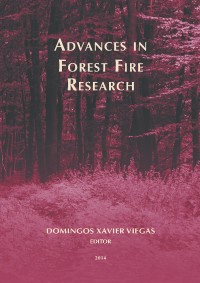Please use this identifier to cite or link to this item:
https://hdl.handle.net/10316.2/34099| Title: | Model reduction approach for wildfire multi-scenario analysis | Authors: | Guelpa, Elisa Sciacovelli, Adriano Verda, Vittorio Ascoli, Davide |
Keywords: | wildfire;reduced model;Proper Orthogonal Decomposition;fast physical model | Issue Date: | 2014 | Publisher: | Imprensa da Universidade de Coimbra | Journal: | http://hdl.handle.net/10316.2/34013 | Abstract: | Wildfire models have been widely applied to the prediction of fire front evolution, in order to obtain useful information for evacuation plans and fire management. A major difficulty in treating wildland fires is related to the complexity of the phenomena that are involved. In addition, it is difficult to obtain accurate input data for the models, especially in the case of on-going fire events. In fact, wind and weather data, available from meteorological stations, fuel characteristics and orographic characteristics data are often inaccurate. Furthermore, some of these data may change during the fire event, so a prediction is necessary. Results obtained from models are therefore affected by errors. Probabilistic approaches are useful in order to overcome some of these problems, but this requires the use of suitable models in order to perform large number of simulations. Over the last decades, empirical and physical based models have been proposed. Physical based models provide detailed results but requires higher computational cost than empirical models. In order to use physical based models for risk analysis and multi-scenario analysis it is necessary to reduce their computational time, which can be achieved through model reduction techniques. In this paper, Proper Orthogonal Decomposition technique (POD) is applied to the reduction of a physical model. A simple one-dimensional physical model has been selected in order to test the approach. This model is based on conservation equations and it is built by setting some of the parameters through empirical data collected during field fire experiments. In this first work, slope and wind contribution are not considered. POD permits to extract the spatial basis of the problem and capture the main features of the system with reduced requirement of computational resources. A comparison shows that the results of the reduced model are close to that of the full model, but the computational time for solving the energy equation is reduced to about 10% of that required by the full model. | URI: | https://hdl.handle.net/10316.2/34099 | ISBN: | 978-989-26-0884-6 (PDF) | DOI: | 10.14195/978-989-26-0884-6_38 | Rights: | open access |
| Appears in Collections: | Advances in forest fire research |
Files in This Item:
| File | Description | Size | Format | |
|---|---|---|---|---|
| 978-989-26-0884-6_38.pdf | 1.65 MB | Adobe PDF |  |
Items in DSpace are protected by copyright, with all rights reserved, unless otherwise indicated.
